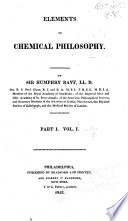 | Sir Humphry Davy - 1812 - 352 pages
...may be conceived to depend upon the velocities of the vibrations ; increase of capacity on the motion being performed in greater space; and the diminution...temperature during the conversion of solids into fluids or gasses, may be explained on the idea of the loss of vibratory motion, in consequence of the revolution... | |
 | 1813 - 574 pages
...may be conceived to depend upon the velocities of the vibrations; increase of capacity on the motion being performed in greater space; and the diminution...temperature during the conversion of solids into fluids or gasses, may be explained on the idea of the loss of vibratory motion, in consequence of the revolution... | |
 | Edward T W. Polehampton - 1815 - 588 pages
...gassfs, may be explained on the iil< u of the UHS of vibratory motion, in consequence of the re. voluHbn of particles round their axes, at the moment when the body becomes fluid or aeriform, or from the loss of rapidity of vibration in consequence of the motion of the panicles... | |
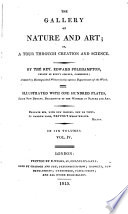 | Edward Polehampton - 1815 - 628 pages
...gasses, may be explained on the idea of the lo«s of vibratory motion, in consequence of the re. volution of particles round their axes, at the moment when the body becomes fluid or aeriform, or from the loss of rapidity of vibration in consequence of the motion of the particles... | |
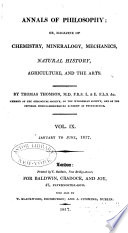 | 1817 - 534 pages
...be conceived to depend upon the velocities of their vibrations ; increase of capacity on the motion being performed in greater space, and the diminution...round their axes, at the moment when the body becomes fluid or aeriform, or from the loss of rapidity of vibration in consequence of the motion of the particles... | |
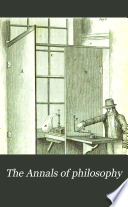 | Thomas Thomson - 1817 - 546 pages
...be conceived to depend upon the velocities of their vibrations ; increase of capacity on the motion being performed in greater space, and the diminution...round their axes, at the moment when the body becomes fluid or aeriform, or from the loss of rapidity of vibration in consequence of the motion of the particles... | |
 | Jared Sparks, Edward Everett, James Russell Lowell, Henry Cabot Lodge - 1819 - 476 pages
...may be conceived to depend upon the velocity of the vibrations; increase of capacity upon the motions being performed in greater space ; and the diminution...of temperature during the conversion of solids into liquids or gases upon the idea of the loss of vibratory motion, in consequence of the revolutions of... | |
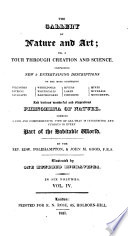 | Edward Polehampton - 1821 - 592 pages
...may be conceived to depend upon the velocities of the vibrations; increase of capacity on the motion being performed in greater space ; and the diminution...round their axes, at the moment when the body becomes fluid or aeriform, or from the loss of rapidity of vibration in consequence of the motion of the particles... | |
 | Andrew Ure - 1821 - 436 pages
...may be conceived to depend upon the velocities of the vibrations; increase of capacity on the motion being performed in greater space ;and the diminution...temperature, during the conversion of solids into fluidsor gases, may be explained on the idea of ihe loss of vibratory motion, in consequence of the... | |
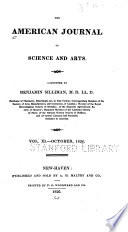 | 1826 - 446 pages
...may be conceived to depend on the velocities of the vibrations ; increase of capacity, or the motion being performed in greater space ; and the diminution...temperature, during the conversion of solids into fluids and gases, may be explained on the idea of the loss of vibratory motion, in consequence of the revolution... | |
| |